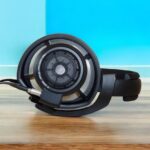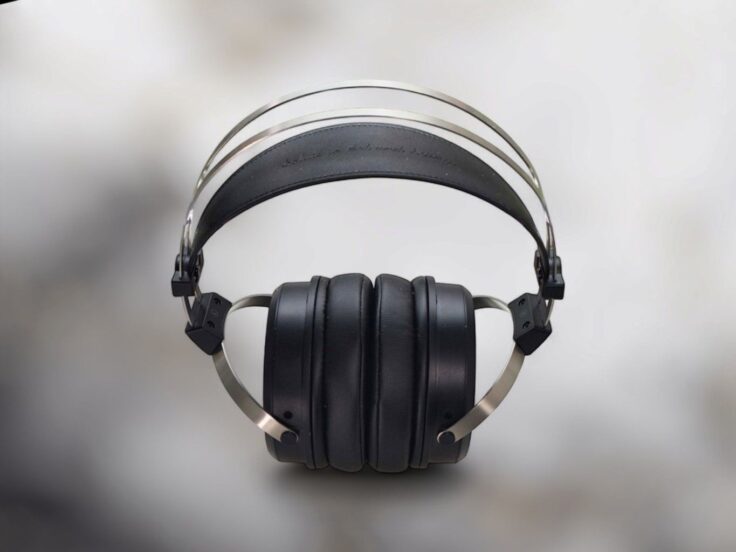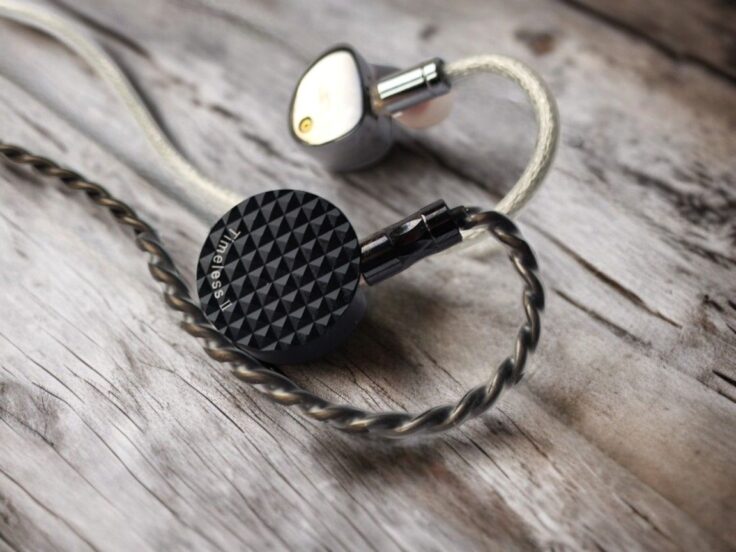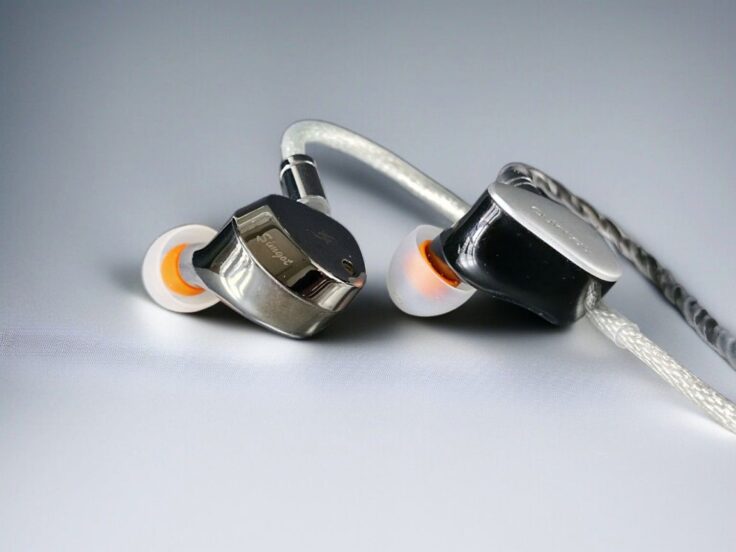The Simgot SuperMix 4 is a $149 quad-driver hybrid in-ear monitor featuring four different driver types: a dynamic driver for the lows, a large balanced armature driver for the mids, and a planar magnetic driver and a piezoelectric transducer for the highs. The result is an impressively coherent sound experience with exceptional detail and excellent timbre.
Previously, Simgot primarily concentrated on single dynamic driver IEMs with notable success. Models like the $219 EA1000, the $109 EA500LM, and the $35 EW200 have become benchmarks in their respective price ranges. I’ve reviewed all these models, as well as the impressive single-driver flagship, the EA2000.
Simgot has experimented with hybrid models before, such as the EM3 and EM5. More recently, they introduced the $109 EM6L in 2023, which offers impressive sound quality (review available here).
With the recent release of the SuperMix 4, EW300, and 10-driver flagship EM10, Simgot has fully embraced hybrid designs. The EW300 and EM10 are tri-brids, with the EW300 featuring a dynamic, planar, and piezoelectric driver, while the EM10 includes one dynamic, eight balanced armatures, and one piezoelectric driver. The SuperMix 4 stands out as Simgot’s only model to use four distinct types of drivers.
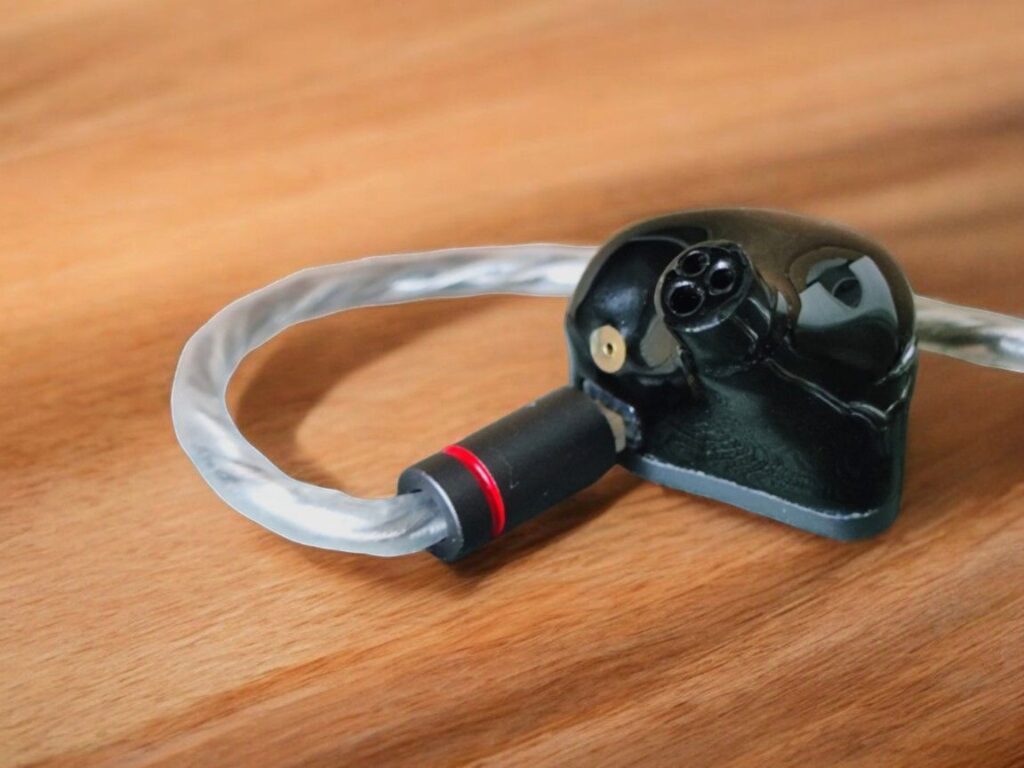
The SuperMix 4 integrates its four drivers as follows:
- Bass: A custom 10 mm dynamic driver, specially developed for the SuperMix 4, features a high-elastic suspension system, long-stroke design, and a high-polymer nano-diaphragm for robust low-end performance.
- Midrange: A large balanced armature driver is selected for its full-range response and natural tonal quality. Larger BA drivers typically provide a richer tonality, and Simgot asserts that this driver delivers lush, smooth mids and highs with high density and refined detail.
- Treble: The high frequencies are managed by both a planar magnetic driver and a piezoelectric transducer. The planar driver offers low distortion and wide bandwidth, being easier to drive than electrostatic drivers. The piezoelectric transducer, with its multi-layer ceramic coating and copper substrate, extends high and ultra-high frequencies with minimal distortion.
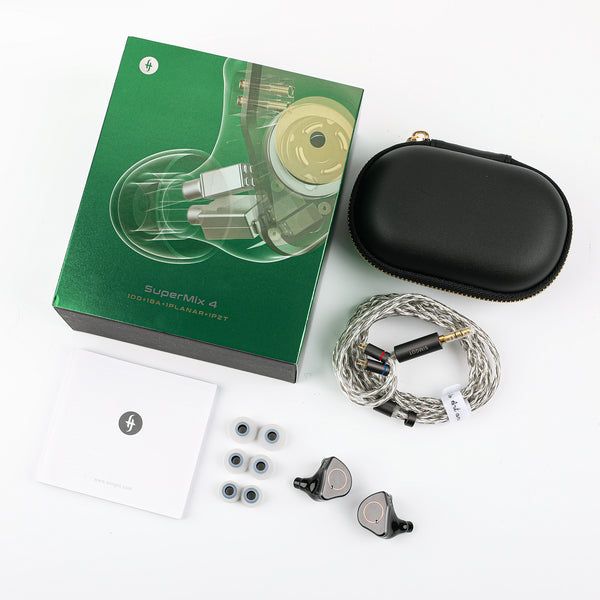
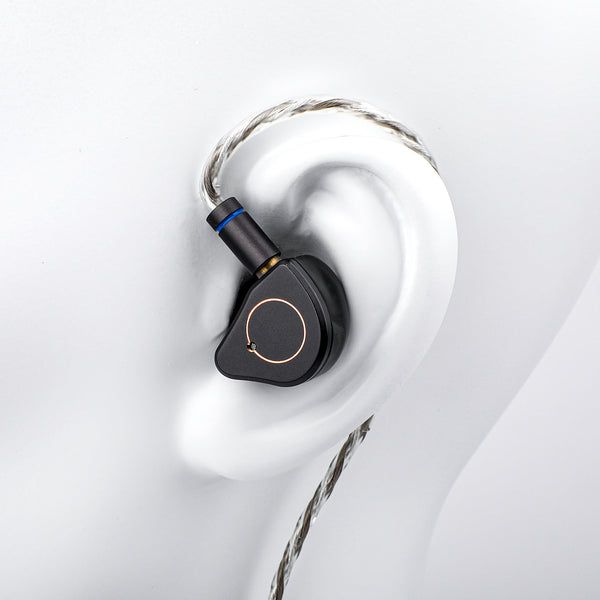
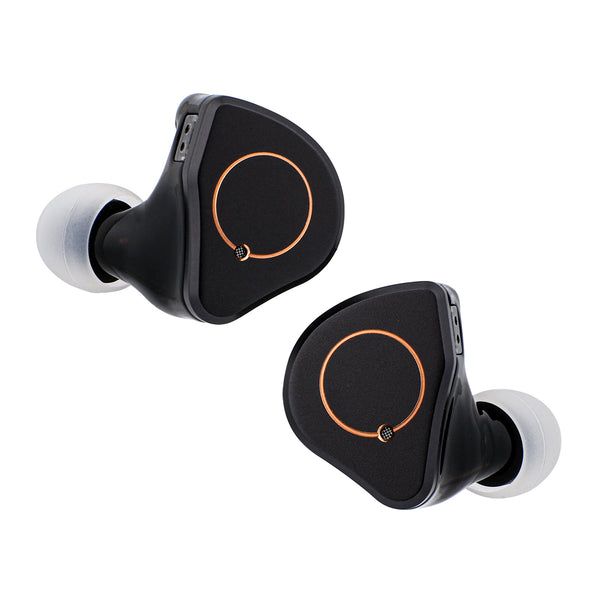
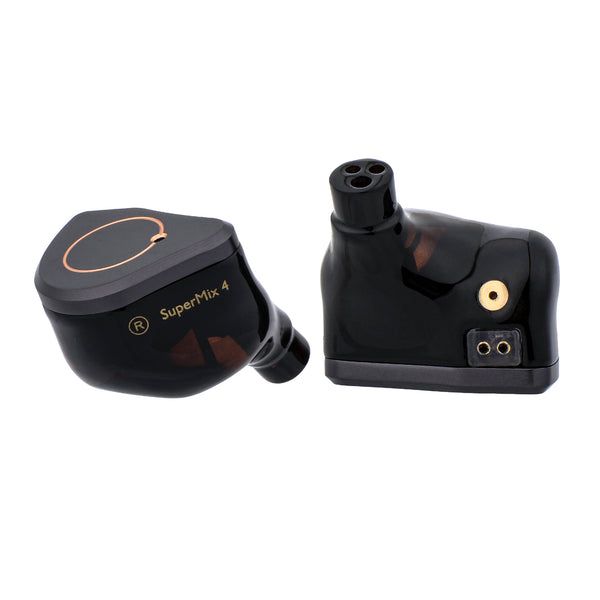
SPECIFICATIONS SIMGOT SuperMix 4
- Driver Configuration: 4 drivers: dynamic, balanced armature, planar magnetic, and piezoelectric (1 DD +1 BA +1 Planar +1 PZT)
- Impedance: 7.2Ω ±15% (@1kHz)
- Sensitivity: 120 dB/Vrms (@1kHz)
- Effective Frequency Response: 20Hz-20kHz
- Housing: 3D printed resin
- Cable Material: Litz structure high-purity oxygen-free copper silver-plated wire
- Connector on earphone: 0.78mm 2-pin
- Termination plug: 3.5mm unbalanced plug
Reviewed at $149.99. We thank Simgot for sending us the review sample.
Check the current price here:
- Linsoul: SuperMix 4
- Amazon: SuperMix 4
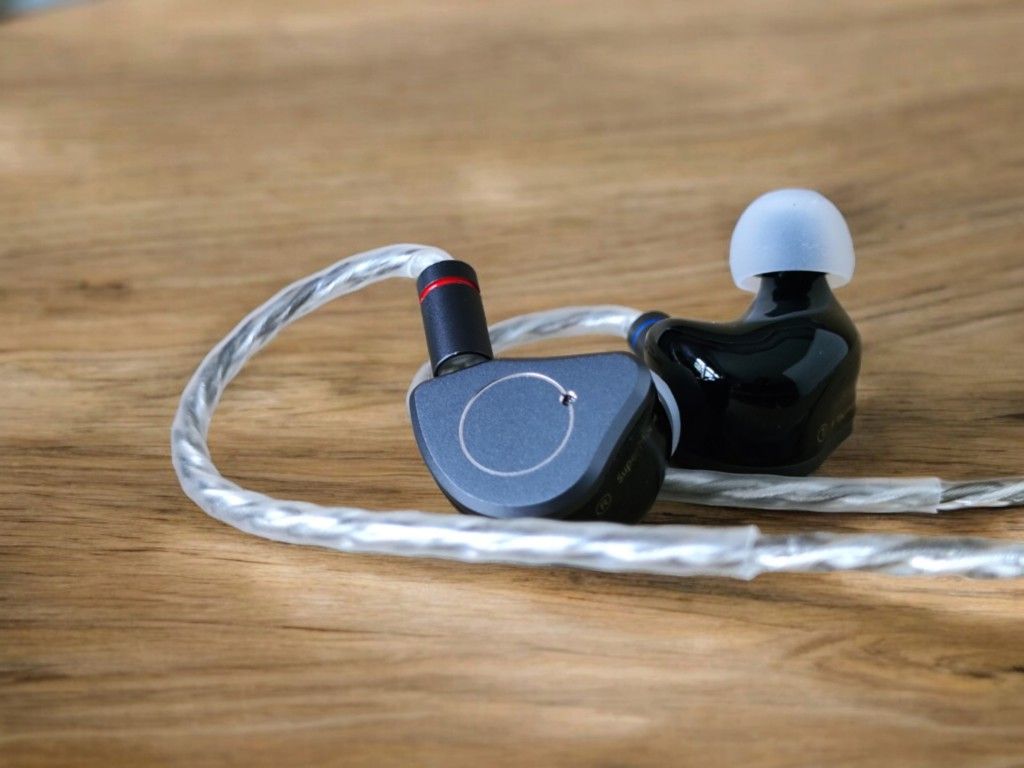
BUILD AND COMFORT
The SuperMix 4 features a well-crafted housing made from black 3D-printed resin with a dark gray decorative faceplate. Despite its relatively large size, it fits comfortably in the ear. The nozzles are medium-sized and non-detachable, designed to accommodate most ear tips. Passive sound isolation is very good.
The included cable is of high quality and has a pleasant feel. The package comes with three sizes of silicone tips and a black travel case.
EAR TIPS
As usual, I tested different ear tips:
- Spinfit CP145 tips: These are my top choice, offering the richest bass and warmest sound while preserving detail.
- Azla SednaEarFit Crysta tips: While the bass is less punchy and full, it remains deep and present. Vocals are slightly recessed, and the treble becomes crisper with an expanded soundstage and enhanced imaging, especially in terms of depth. However, the overall presentation doesn’t feel as smooth and effortless as with the CP145 tips.
- Stock tips: These fall in between the CP145 and Crystal tips in both bore size and sound quality. They sound good, but I prefer the CP145 tips for their slightly better bass and warmer yet equally detailed sound.
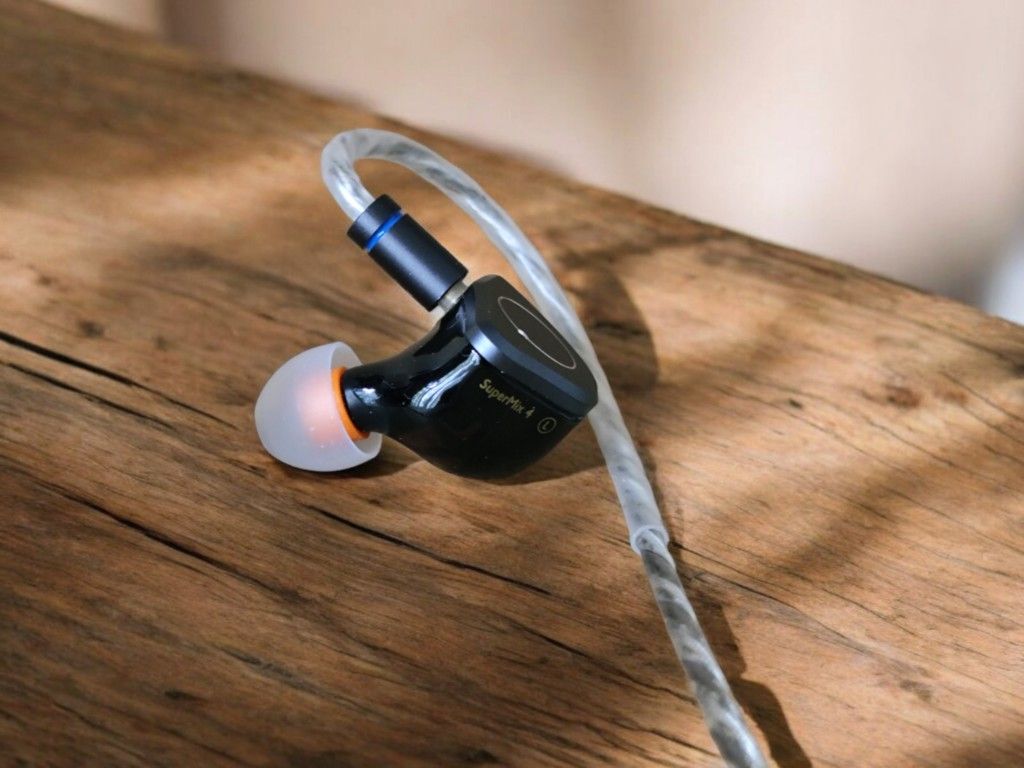
STAND ALONE LISTENING IMPRESSIONS
Associated equipment: Topping A90 amplifier with the RME ADI-2 DAC FS as source. The RME sounds excellent by itself, but it’s more practical for me to use the Topping. I used the Spinfit CP145 ear tips on the SuperMix 4, but I went through the playlist with the stock tips, and my comments would’ve been quite similar with those.
Jambi by Tool
This intense metal track sounds marvelous on the SuperMix 4. The bass is powerful and detailed, the vocals are standing out nicely in the mix, and the treble reveals details I’ve rarely noticed. I think this is one of the better renditions I’ve heard of this track. Even though the treble is very clear and present, there is no problem with sibilance, as it often can be with brighter earphones.
Golden Age by Beck
Again, the bass is well pronounced and it’s powerful yet feels very even all the way down. The vocals are very clear, and the guitar is crisp without being unpleasant. The level of detail is impressive.
Lazarus by David Bowie
The bass is powerful and warm, but not overpowering. It’s just there, very well defined, reaching deep with excellent punch. The vocals are very clear and present, with lots of nuance. The upper registries are also nicely delivered with plenty of detail.
Come Away With Me by Norah Jones
Again, the bass impresses me; it is very present without taking all the attention. The vocals stand out very nicely in the mix, and the instrument separation is excellent. The tuning is very pleasant and also highlights all the important elements so the music and renders detail effortlessly.
Yoshimi Fighting the Pink Robots by The Flaming Lips
This track can be quite crisp with many earphones, but the SuperMix 4 balances it nicely and seems to highlight everything at once in a very nice way.
Summer 3, Vivaldi Recomposed by Max Richter
The strings are rendered in a very natural and organic way with great instrument separation, a very appealing tonal balance, and an airy presence.
Liszt: Die Zelle in Nonnenwerth by Leif Ove Andsnæs
This is a classical solo piano piece, which is rendered very nicely. The piano strings have texture and nuance and sound delicate and tender.
Escape Route by Boris Blank
The bass is really powerful and dynamic; it’s tactile and well defined. The trumpet and percussion are clear and very present.
It Could Be Sweet by Portishead
The bass is powerful, and the vocals are clear and present. It’s an excellent presentation from the SuperMix 4.
Maple Noise by Greene Serene
This very dynamic track also sounds excellent, with superb macrodynamics, microdynamics, detail, and very good tonal balance. Separation of instruments is fantastic and the soundstage is large.
As Before by Olga Konkova
The cajôn drum has lots of punch and weight, and the vocals are crystal clear without sounding dry or overly crisp. The piano sounds excellent and full of subtle detail.
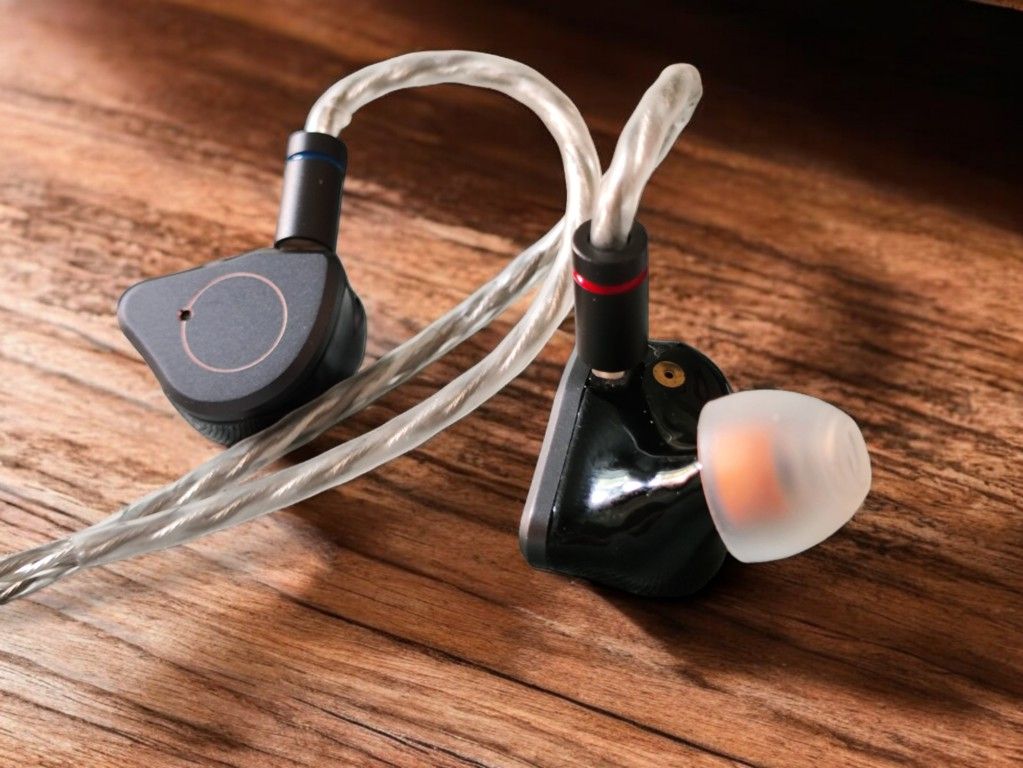
WRAPPING IT UP
Sound Signature
Simgot states that the SuperMix 4 is tuned to the Harman 2019 reference target, resulting in robust bass and pronounced highs. Unlike many Harman-tuned IEMs, which often have a slightly recessed midrange, the SuperMix 4 maintains a very present and articulate midrange. Its excellent clarity and separation across the frequency range likely contribute to this well-balanced presentation.
Treble
The treble is very clean and detailed. It is articulate but not overly bright. I never had issues with bothersome sibilance.
Midrange
Vocals and instruments are rendered with notable clarity and presence. Although the SuperMix 4 isn’t mid-centric, it still provides a satisfying and well-rounded experience. The powerful bass does not encroach on the mids, which remain clear and distinct.
Bass
The bass is very impressive. It’s very well defined and controlled, yet with lots of presence, body, and richness. It varies a bit in quantity with the tips used.
Soundstage and Imaging
The soundstage is impressive, with excellent instrument separation and superb imaging. However, the depth of the soundstage can feel less pronounced compared to its width, a characteristic that can vary depending on the ear tips used.
Detail, Dynamics, and Timbre
The SuperMix 4 truly excels in this area. The level of detail across the frequency spectrum is exceptionally high, with meticulous articulation and impressive microdynamics. Macrodynamics are equally strong, offering a punchy and tactile experience. The timbre is also noteworthy; Simgot has achieved a sound that feels effortless, organic, and natural.
COMPARISONS
SIMGOT EM6L vs. SuperMix 4
The $109 EM6L is a hybrid IEM featuring one dynamic driver and four balanced armature drivers, designed for both gamers and audiophiles. It is made of resin like the SuperMix 4 and shares similar size and weight, as well as amplification demands. Both models follow the Harman 2019 target, resulting in a comparable sound signature and frequency response.

The main difference lies in the bass: the SuperMix 4 offers greater sub-bass energy, and provides a deeper, fuller, and more detailed bass experience.
The treble energy is comparable between the two, but SuperMix 4 provides higher detail levels. The energy and presence in the midrange are also similar, but the SuperMix 4 excels in articulation, offering better detail, definition, and microdynamics.
Both IEMs deliver excellent imaging and a large soundstage, making them well-suited for gaming. The SuperMix 4 does, however, offer better instrument separation and a blacker background.
In conclusion, the EM6L is a good IEM at its price point, but the step up to the SuperMix 4 is significant in many aspects.
KIWI EARS QUINTET vs. SuperMix 4
The Quintet is, as the name suggests, a five driver IEM hybrid using the same four types of drivers as the SuperMix 4, in a very similar configuration. It combines a dynamic driver for the bass with two balanced armatures for the mids and a planar magnetic- and piezoelectric bone conductor driver for the treble. The Quintet and the SuperMix 4 are similarly demanding on the amplifier.
The Quintet is tuned a bit differently than the SuperMix 4, with less bass and crisper mids and highs. The treble is brighter and more energetic, while the SuperMix 4’s treble is mellower yet still even more detailed, sounding more organic and cleaner. Also in the midrange, the Quintet is more pronounced, crisper, and brighter, whereas the SuperMix 4, though even more nuanced, lacks the Quintet’s energy. In the lower regions, however, the SuperMix 4 offers stronger, deeper, and better-defined bass, surpassing the Quintet in quantity and quality.

Both earphones have good soundstage and great imaging capabilities. However, the SuperMix 4 is cleaner with better instrument separation and a darker background, making the imaging even better. Generally, in terms of detail, the SuperMix 4 surpasses the already detailed Quintet. It also offers more impactful macrodynamics.
The SuperMix 4 sounds more organic and natural sounding timbre in the bass region, while I find the the Quintet’s more energetic mids to sound better. However, the SuperMix 4 has superior treble timbre.
To conclude, I find the SuperMix 4 technically superior and with a more organic presentation. However, the Quintet is still a good IEM, and it has a different tuning with more midrange and slightly less bass presence.
SIMGOT EA1000 vs. SuperMix 4
The EA1000 is a single driver IEM with a 10 mm dynamic driver and a passive radiator. It’s made of metal and has interchangeable nozzles. It is slightly smaller but heavier than the SuperMix 4. The EA1000 is notably less demanding on the amplifier.
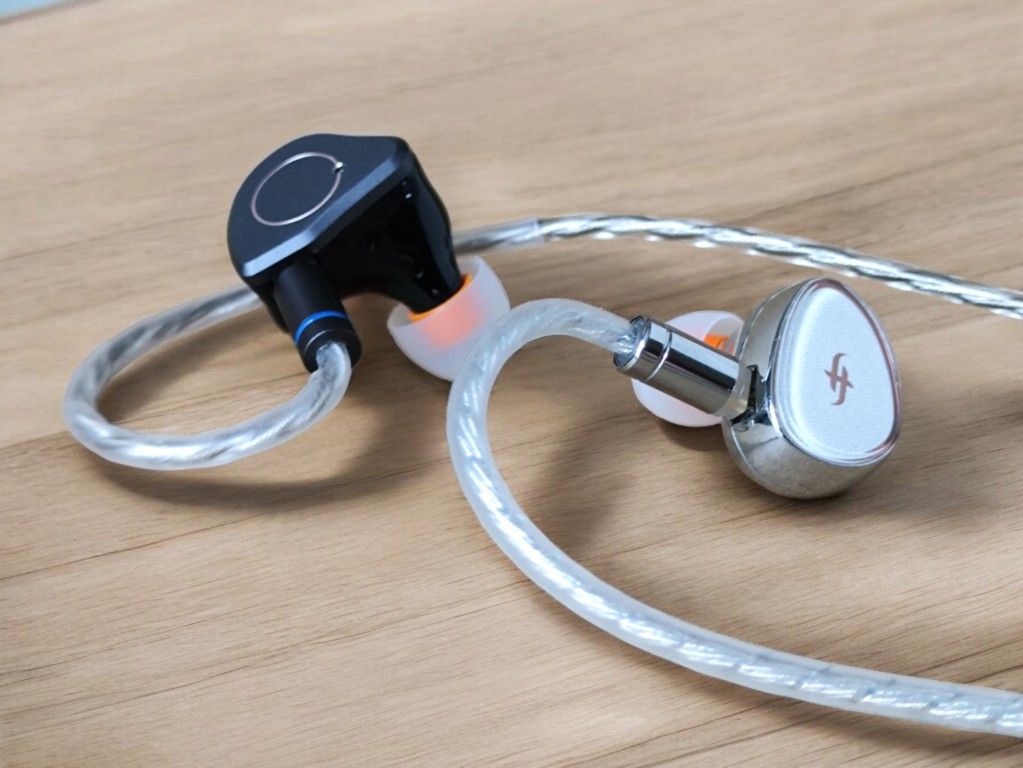
The nozzles of the EA1000 have a significant impact on the tuning, which I have covered in my separate review. For this comparison, I used my preferred “middle road” nozzles, not the warmest, not the brightest.
The Simgot EA1000 and SuperMix 4 share a similar sound signature, but the EA1000 offers a fuller midrange and slightly less subbass.
Both earphones have a sweet, organic treble. The SuperMix 4 may be slightly more detailed, but the EA1000 is close. Regarding the midrange, the SuperMix 4 is present and well-tuned, but the EA1000 provides a bolder rendering, making vocals and instruments fuller and more intimate. Further, both earphones offer excellent bass performance, but the SuperMix 4 is more linear, better defined, and slightly punchier with greater sub-bass presence.
The EA1000 has a good soundstage and imaging, but the SuperMix 4 offers better instrument separation, a slightly wider soundstage, and more precise imaging.
Both earphones are detailed and dynamic, with the SuperMix 4 slightly ahead in detail and bass dynamics. The EA1000 excels in midrange dynamics, while the SuperMix 4 has better bass articulation. Both have excellent timbre, though I prefer the EA1000’s midrange and the SuperMix 4’s bass and treble.
FiiO FD15 vs. SuperMix 4
The FiiO FD15 is the successor of the fabulous-sounding FD5, which I recently reviewed. As its predecessor, the FD15 is a midrange-focused, warm-sounding single-driver IEM. It is quite different from the SuperMix 4.
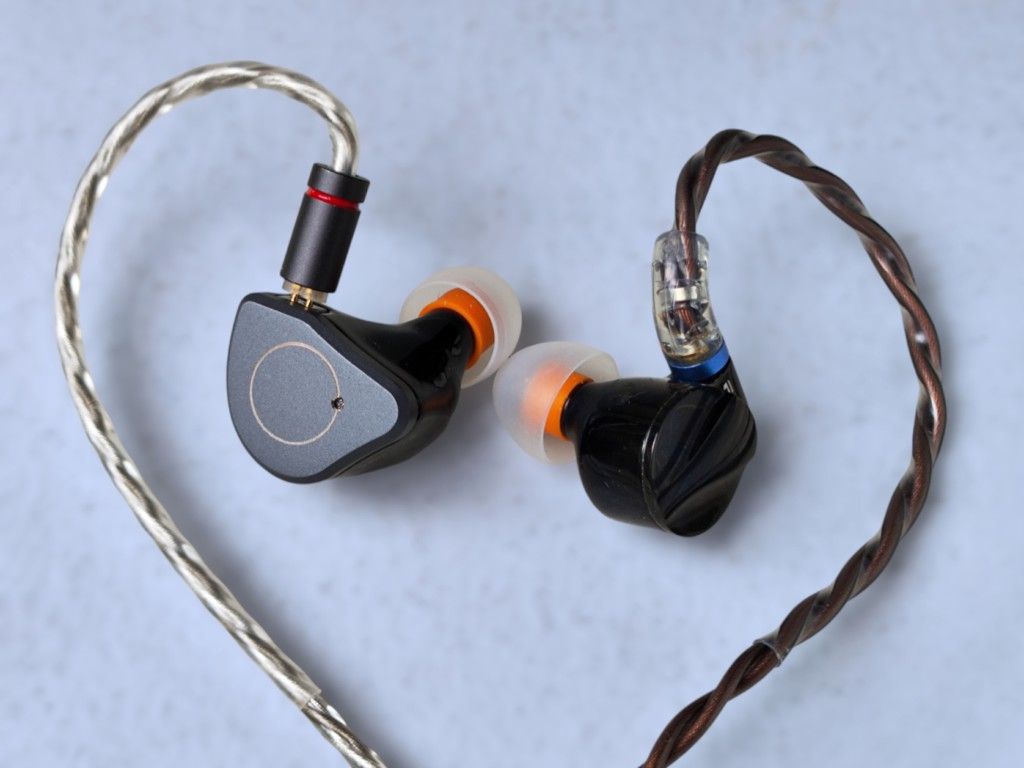
Starting with a treble, they are both very smooth and natural-sounding and very detailed, although the Supermix 4 is even more refined.
The midrange is very different. The FD15 sounds full-bodied, warm, and very engaging and intimate. It is very dynamic and tactile, with excellent timbre. The Supermix 4 is significantly less warm. Although it sounds excellent by itself, and has great timbre and differentiation, it feels a lot thinner in direct comparison.
The bass of the FD15 is thick and warm, and even though it is dynamic and reaches deep, it lacks the definition and precision of the Supermix 4.
When it comes to soundstage and imaging, there is no contest. The FD15 is good, but its rich tonality makes a huge soundstage quite impossible. The Supermix 4 has much more space between the instruments and significantly better imaging.
In conclusion, these two IEMs each offer distinct strengths and cater to different preferences, making them both excellent choices in their own right.
SUPERMIX 4 FOR GAMING
With its exceptional imaging, balanced sound signature, and detailed, clean rendering across the frequency spectrum, the SuperMix 4 excels in gaming. Its deep, well-defined bass enhances both gaming and multimedia experiences, providing impactful and immersive soundscapes.
AMPLIFICATION
The SuperMix 4 is not extremely easy on the amplifier, but trying out a small variety of portable options, I found it mostly to do quite well.
I start out with Quboz on my POCO F5 phone’s headphone output. Even if it stays in the +/-50% volume range, it sounds surprisingly mediocre with a thick, wooly sound and bloated bass.
The xDuoo Link2 Bal sounds a lot better, so does the THX Onyx. The Dragonfly Cobalt sounds even better still, clearer with better definition.
However, my favourite portable options, especially considering their respective price, are two recently released USB mini DACs: the FiiO JA11 and the Letshuoer DT03.
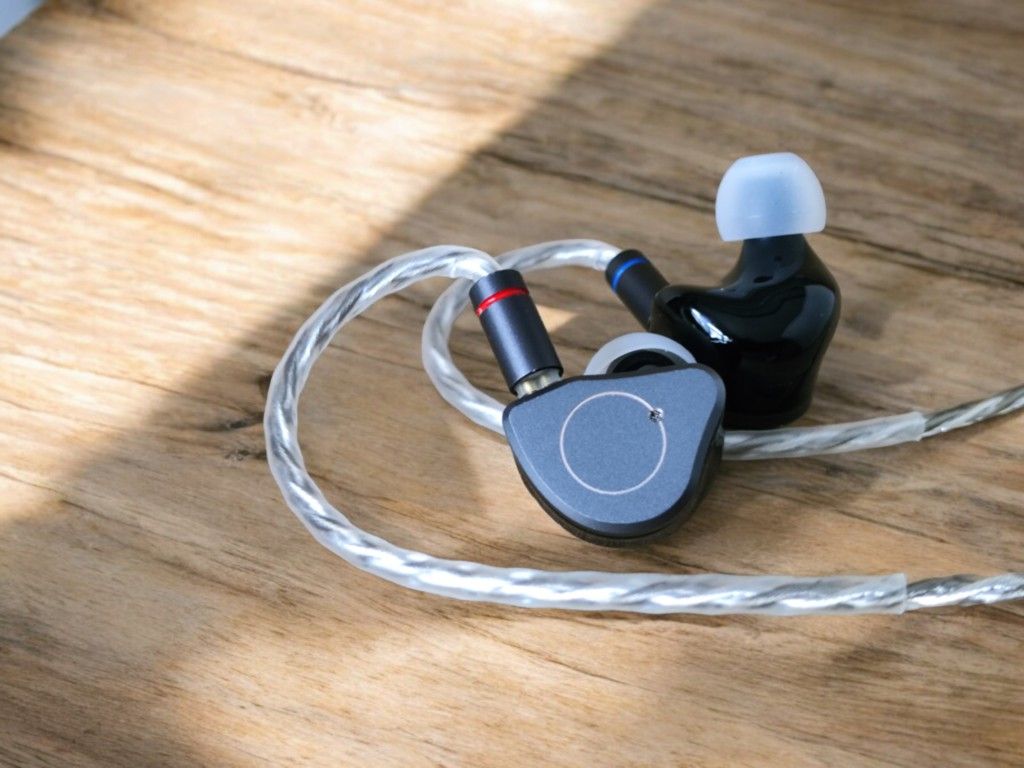
CONCLUSION
The Simgot SuperMix 4 delivers a well-balanced sound with robust, extraordinarily well-defined bass, a clean, articulate midrange, and clear, sweet highs. The soundstage is large, and the imaging is excellent.
With its abundance of effortless detail, high dynamic range, and natural timbre, the SuperMix 4 comes highly recommended.
More info / purchase links:
- Linsoul: SuperMix 4
- Amazon: SuperMix 4
Any purchase you make on Amazon or Linsoul with any of our affiliate links will give us a small provision at no cost to you.
We only get a provision for items that are not returned, so there’s no incentive for us to recommend something that’s not good.
Linsoul : Headphones, Earbuds, Wireless Earbuds, Desktop DAC/AMP, Portable DAC/AMP, Digital Audio Players,
Amazon: Headphones, IEMs, Headphone Amplifiers, Home Audio or Anything else.
.
If you enjoyed this article or other content on The Headphoneer, you might consider leaving a small donation to keep this website up and running. No donation is too small. Thanks for supporting us!
If you like our work please follow us on Instagram, Facebook and Twitter , it will help us grow. Sharing is caring 🙂



